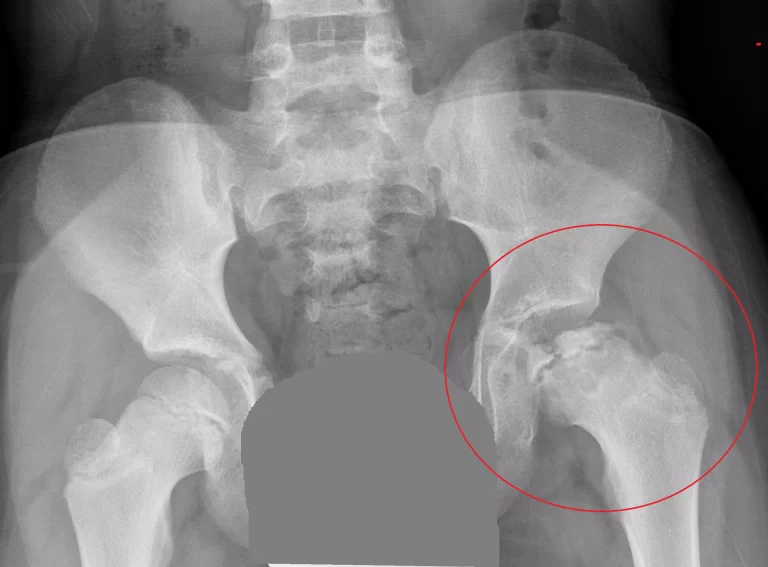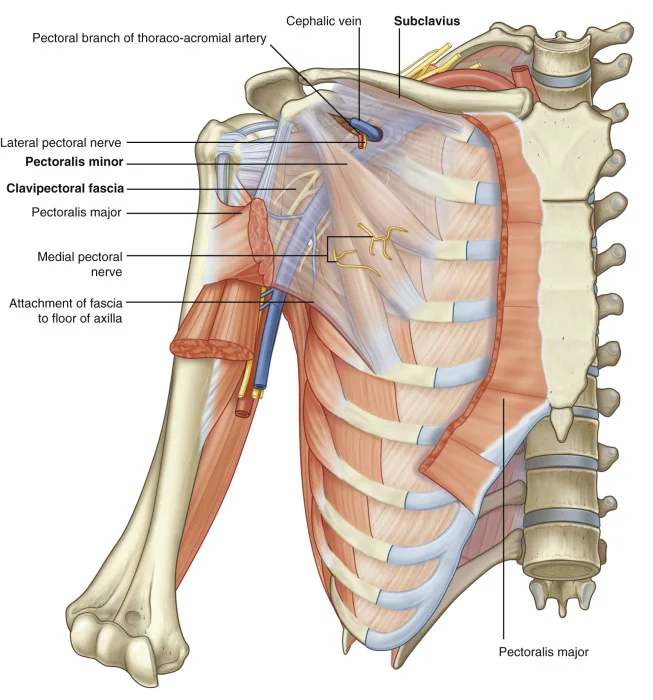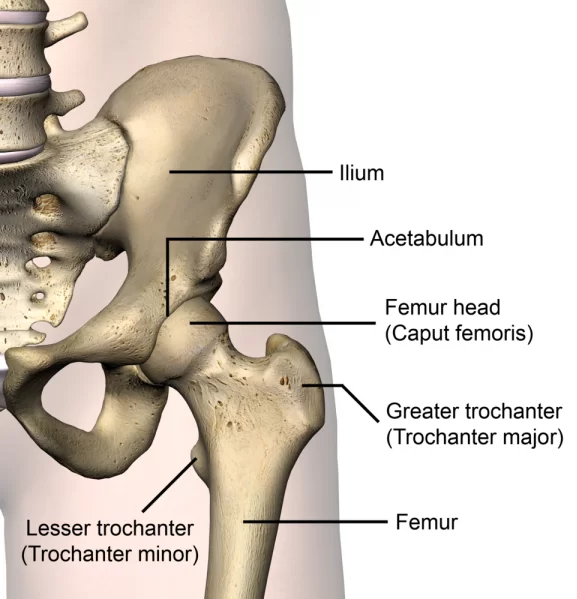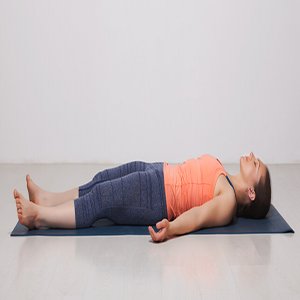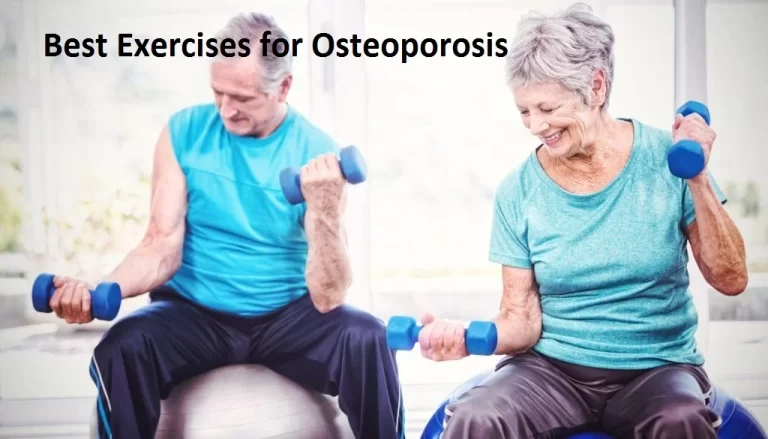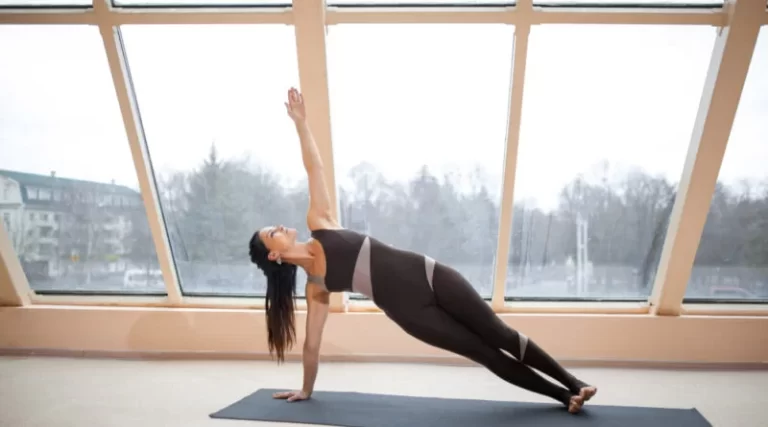Scapular muscles- Anatomy and Exercise
Introduction
The scapula provides attachment for several groups of muscles. scapular muscles include the supraspinatus, subscapularis, teres minor, infraspinatus, deltoid, and teres major. These muscles attach to the scapular surface and assist with abduction and external and internal rotation of the glenohumeral joint.
Anatomy of scapular muscles
1. Supraspinatus
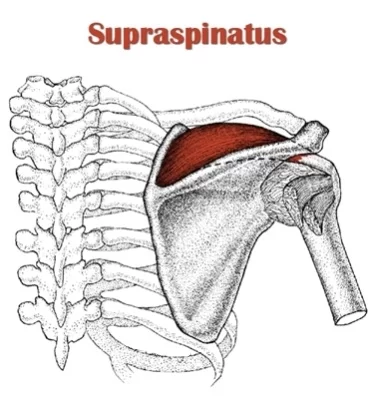
Origin
It originates from the medial two-thirds of the supraspinous fossa of the scapula
Insertion
It inserts in the upper impression on the greater tubercle of the humerus
Nerve Supply
It is supplied by the Suprascapular nerve (C5, C6)
Action
Along with other scapular muscles, it steadies the head of the humerus during arm movements. It also acts as an abductor of the shoulder joint from 0-15 degree
2. Subscapularis
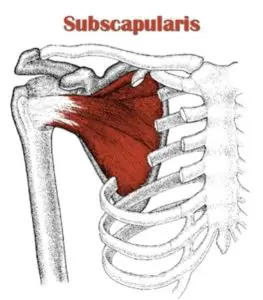
Origin
It originates from medial two-thirds of the subscapular fossa.
Insertion
It inserts at the lesser tubercle of the humerus.
Nerve Supply
It is supplied by upper and lower subscapular nerves (c5, c6).
Action
It acts as medial rotator and adductor of arm.
3. Teres Minor
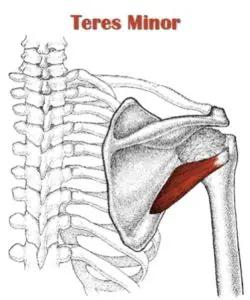
Origin
It originates from upper two-thirds of the dorsal surface of the lateral border of the scapula.
Insertion
It inserts on lowest impression on the greater tubercle of the humerus.
Nerve Supply
It is supplied by axillary nerve (C5, C6).
Action :
It acts as lateral rotator of arm.
4. Infraspinatus
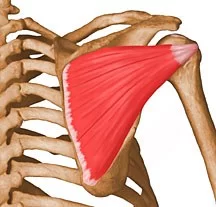
Origin
It originates from medial two-thirds of the infraspinous fossa of the scapula.
Insertion
It inserts on middle impression on the greater tubercle of the humerus.
Nerve Supply
It is supplied by suprascapular nerve (C5, C6)
Action
It acts as lateral rotator of arm
5. Deltoid
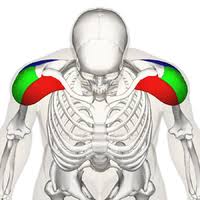
Origin
It originates from
– The anterior border and adjoining surface of the lateral one-third of the clavicle.
– The lateral border of the acromion where four septa of origin are attached.
– Lower lip of the crest of the spine of the scapula.
Insertion
It inserts on the deltoid tuberosity of the humerus where three septa are attached.
Nerve Supply
It is supplied by axillary Nerve ( C5, C6)
Action
It acts as
– Powerful abductors of the arm at the shoulder joint from beginning to 90′.
– The anterior fibres are flexors and medial rotators of the arm.
– The posterior fibres are extensors and lateral rotators of the arm.
6. Teres Major
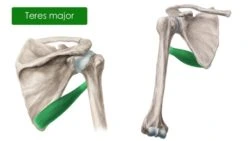
Origin
It originates from the lower one-third of the dorsal sudace of lateral border and inferior angle of the scapula.
Insertion
It inserts on the medial lip of the bicipital groove of the humerus.
Nerve Supply
It is supplied by lower subscapular nerve (C5, C6)
Action
It act as medial rotator and adductor of arm
Strengthening exercise of scapular muscles
1. STANDING ROWS
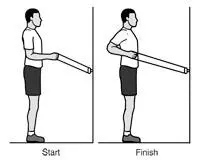
- Stand facing anchor with resistance band at elbow height.
- Step back until the arms are straight and the band has mild tension.
- Stand tall, bringing shoulders down and back, and engage abdominal muscles (do not hunch shoulders or push out ribs).
- Draw elbows back while squeezing shoulder blades together behind.
- One should feel the muscles between the shoulder blades activate and the chest open up.
- Perform 2 sets of 10.
2. BILATERAL EXTERNAL ROTATION
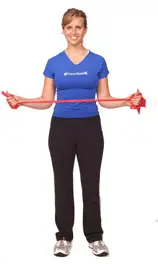
- Stand tall with shoulders down and back drawing belly in towards spine.
- With elbows at 90-degrees and resistance band in hands, gently open arms out to sides against resistance.
- Don’t let shoulders tilt forward — keep them down and back.
- This strengthens the rotator cuff muscles.
- Repeat 2 sets of 10 repetitions.
3. SCAPULAR PUSH-UPS
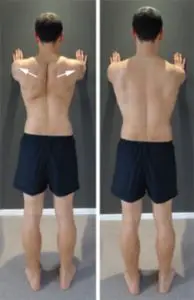
- Stand at a wall with hands placed on the wall, chest height and shoulder-width apart.
- Keep the arms locked out and palms flat on the wall.
- Without bending your arms, reach with your sternum towards the wall until both shoulder blades come together in the back.
- Driving through both hands evenly, push the sternum away from the wall until both scapula open up and your upper back is slightly rounded, then repeat.
4. RESISTANCE BAND SIDE RAISES
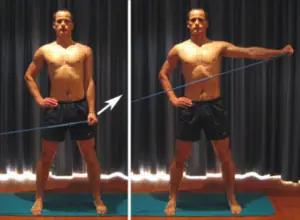
- Begin this exercise standing with the back straight, holding a resistance band.
- Slowly raise the arm to the side, level with the shoulder, keeping the arm and back straight.
- Then slowly lower back down.
- Perform 3 sets of 10 repetitions.
STRETCHING EXERCISE OF SCAPULAR MUSCLES
1. CROSS-OVER ARM STRETCH
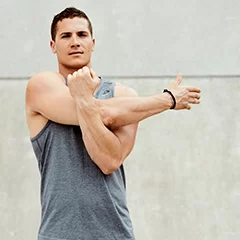
- Lift one arm so that it is perpendicular to the floor and extend it straight without locking it.
- Take the wrist of the extended, lifted arm with the opposite hand.
- Gently pull the arm across the front of the body, trying to hug the chest with the arm.
- Hold the stretch for 5 seconds before slowly releasing it.
- Repeat on the other side.
2. DOORWAY STRETCH
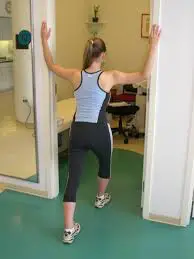
- Stand in a doorway, holding both sides of the frame at or just below shoulder height.
- Lean forward gently, keeping the back straight until there is a light stretch in the front of the shoulders.
- Lean further forward to intensify the stretch if necessary. It should not feel at all painful.
- Return to a standing position.
3. CHILD’S POSE

- Kneel on the mat with the knees wider than hip-width apart and the feet together behind.
- Sit back on the heels and fold forward, resting the belly on the thighs.
- Extend the arms out in front and rest the forehead on the floor.
- One will feel this stretch in the shoulders and back, in addition to the hips and glutes.
- Gently press the chest and shoulders toward the ground to deepen the stretch.
- Hold for at least 30 seconds.
4. ELBOW-OUT ROTATOR STRETCH

- Start standing or sitting tall.
- Place the left hand on the middle of the back, palm and elbow pointing out.
- Reach across the front of the body with the right hand and grab onto the left bicep or elbow.
- Gently pull forward.
- Hold for at least 30 seconds and then repeat on the other side.
FAQ
What are scapular muscles?
The rotator cuff muscles, teres major, subscapularis, teres minor, and infraspinatus are the muscles that make up the scapula’s intrinsic muscles. These muscles help with glenohumeral joint abduction, as well as internal and external rotation, and they attach to the scapular surface.
What muscles laterally rotate the scapula?
The serratus anterior and the trapezius are the main muscles involved in lateral rotation.
Where is the scapular muscle?
The triangle-shaped bone in the upper back is called the scapula, or shoulder blade. An intricate network of muscles surrounds and supports the bone, enabling you to move your arm.
Why are scapular muscles important?
These muscles, collectively referred to as your scapula stabilizers, pull in various directions to assist in maintaining the stability of your shoulder blades while your arms move and bear weight.
Which muscle elevates the scapula?
levator scapulae muscles
The primary purpose of the superficial extrinsic back muscles known as the levator scapulae is to raise the scapulae.
What muscle abducts the scapula?
Together, the serratus anterior and trapezius muscles allow the scapula to rotate and move in a way that allows the arm to reach its maximum range of motion. In particular, they make it easier to abduct the arm upward from a 90-degree angle.
What muscles adduct the scapula?
Adduction of the scapula is also called the scapula retraction. Along the chest wall, the scapula is shifted posteriorly and medially. The primary movers are the rhomboideus major, minor, and trapezius muscles.

